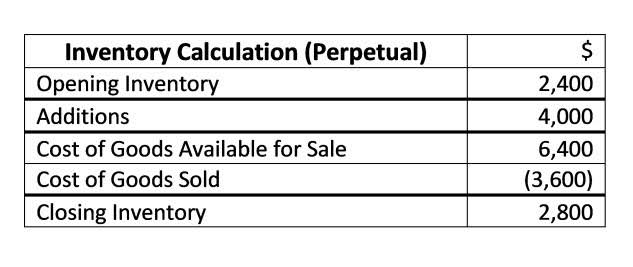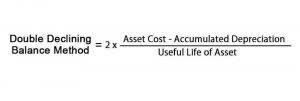Including both totals makes the discount clearer and reminds your client of the special offer you’ve given them. Depending on the nature of your work, you could include the hours you worked and your hourly rate or the tasks you completed and your rate for each task. Having this information also helps with bookkeeping, as it provides proof of when an invoice was sent out. It is also helpful for customers who may need to review their billing history. I recommend you allow whatever system you’re using to do this for you — that way your invoices will end up having sequential numbers. It’s not only your information that needs to be included on a proper invoice, you also want the client’s as well.
Payment method and terms
Download, customize, and send this invoice to clients who hire your freelance services on retainer. It can be modified to be sent at any time period for your retainer fees, with extra lines to fill in any additional service requests. I’d prepare and send our Word document invoice to Fortune 100 companies, and a few weeks later they’d send us back a check.
What are the Important Elements of Freelance Invoice?
- Clients who reach out to freelancers are outsourcing business to them as an extension of their own company.
- Certain payment funds, including payments made by credit card, are temporarily held during payment processing by Silicon Valley Bank, a division of First-Citizens Bank & Trust Company.
- By setting up a system that sends invoices automatically, you can take the tedious admin tasks off your plate and get on with more important work.
- Hanna is responsible for the company’s SEO Content strategy, ensuring that the company’s website ranks high in search engine results.
- If you prefer to invoice clients once a week, designate a specific day to do so.
This is when the assignment is fresh on the client’s mind, and it is easier to follow up for payments as well. In the case of long-term projects, then billings on a weekly, monthly or quarterly basis can be done, and the invoices raised and sent accordingly. A freelancer is an individual who does not work for a particular company as an employee but picks up multiple assignments for various different companies or individuals. For a freelancer, raising invoices is an important business process as it not just determines the amount to be paid but also ensures that the payments are received on time. It also helps eliminate any confusion or misunderstanding between the freelancer and the client. The process of invoicing can have a great impact on a freelancer’s career and their financial well-being.
- However, employment independence also means dealing with administrative tasks such as invoicing, which is requesting payment for services rendered.
- You can add text, your logo, or other details, though it may take a bit of work to achieve your desired formatting.
- To ensure you’re playing by the rules, check with a tax professional in your jurisdiction.
- Then, on the left of your invoice under all the contact information, add your invoice number.
Guide to Creating a Freelance Invoice
Remember, the key to successful invoicing lies in clarity, accuracy, and professionalism. It’s crucial that your name, address, email, and phone number are clearly stated on the invoice. This is useful in case of any conflicts how to invoice as a freelancer or issues with the stated amount or payment methods. By providing accurate and complete contact information, freelancers ensure that clients can easily reach them, fostering clear communication and professionalism.
Does an invoice mean you’ve been paid?
It saves time and offers an economical means to generate professional-looking invoices. With a well-structured invoice template, you can focus on your core freelance work without worrying about the nitty-gritty of creating invoices from scratch. This ultimately leads to a more streamlined invoicing process, allowing you to get yourself paid faster and focus on growing your freelance business. Although using a freelance invoice template lets you create invoices quickly, invoicing is much more than just creating invoices. Thus, InvoiceOwl— the complete invoicing solution lets you streamline your entire invoicing process, from creating invoices to sending them and generating sales reports. That’s why we’ve created an invoice generator you can easily use.
- The easiest and most affordable way to do so is by logging your invoices into an Excel spreadsheet or Google Sheets.
- Having a schedule or system for when you send invoices and check on late payments can also be helpful.
- However, you can choose to register for VAT before you hit this income level if you’d prefer.
- Double-checking all the information, including the billing amounts, client details, and services listed, can help ensure accurate invoicing and reduce the risk of disputes.
- Maintain a professional tone throughout your correspondence with each client to ensure they see you as a legitimate business.
- The invoice number should be located toward the top of the document, usually just below the contact details.
- For one-off clients and occasional projects, it can be beneficial to send your invoice as soon as the project is complete.
How to invoice as a freelancer: a simple guide and a free invoice template

Read our helpful guide on how to start a business in Lithuania from the UK, including info on Lithuania company formation, legal entity types and more. Freelancers in the UK can get paid by invoicing customers and clients directly, or through freelance platforms if that’s how they’ve found the client in the first place. If you’ve just started to work as a UK freelancer, figuring out how to get paid is a big deal. PandaDoc lets you create reusable templates to store and manage electronically. With our document workflow management software, you can create custom receipts that fit your business. Invoicing is often a feature of more robust accounting and/or payroll systems.
Your second column will describe the work performed (i.e., social media management, software testing, consulting services). The body of the invoice is the section in which you detail the work you’ve performed and how much you’re billing for that work. The due date is determined by the date you sent the invoice and the payment terms that you and the client have negotiated. This matters because the date that payment is due often depends on the date that the invoice was submitted for payment. Otherwise, your client won’t know who the invoice is coming from or how to get in touch with you if there is an issue. No matter what method you use, your invoice should have the right information to help you get paid.

A clear and professional invoice not only communicates your value to clients but also helps maintain a positive working relationship. The following highlights the advantages of using invoicing tools and software and discusses top options for your freelance business. By leveraging invoicing software and tools, you can automate various aspects of the invoicing process, save time, and enhance your productivity. It is essential to review your invoices for errors before sending them to maintain a professional image and prevent any discrepancies that may delay payment. Double-checking all the information, including the billing amounts, client details, and services listed, can help ensure accurate invoicing and reduce the risk of disputes. Remember, the key to an effective invoice is clarity and completeness.
Optional discount line
When it comes time to invoice, include these payment details in the breakdown of your services. A past-due invoice alerts your client that the payment due date has passed and tells them whether they’re liable for late fees. Simply copy and paste the text into your program of choice to add your details. Then, personalize https://www.bookstime.com/ the template to match your freelance business’s branding. Explicitly listing your issue date and payment due date provides clarity and removes the likelihood of confusion or misunderstanding. The invoice number helps you keep track of your invoices and stay organized even when working with multiple clients.
If your breakdown of services includes a number of items, show what each of those items cost. This could be a cost per service, or it might be the number of hours you worked at your agreed-upon rate. Finally, add a breakdown of the services rendered so the client knows exactly what they’re paying for. This shouldn’t be the first time your client has heard about the due date. When you agreed to do the work — and hopefully signed a contract, or at least agreed to terms via email — you should have set expectations with the client for payment terms. For example, if this is your first invoice, you might start with #1001.






